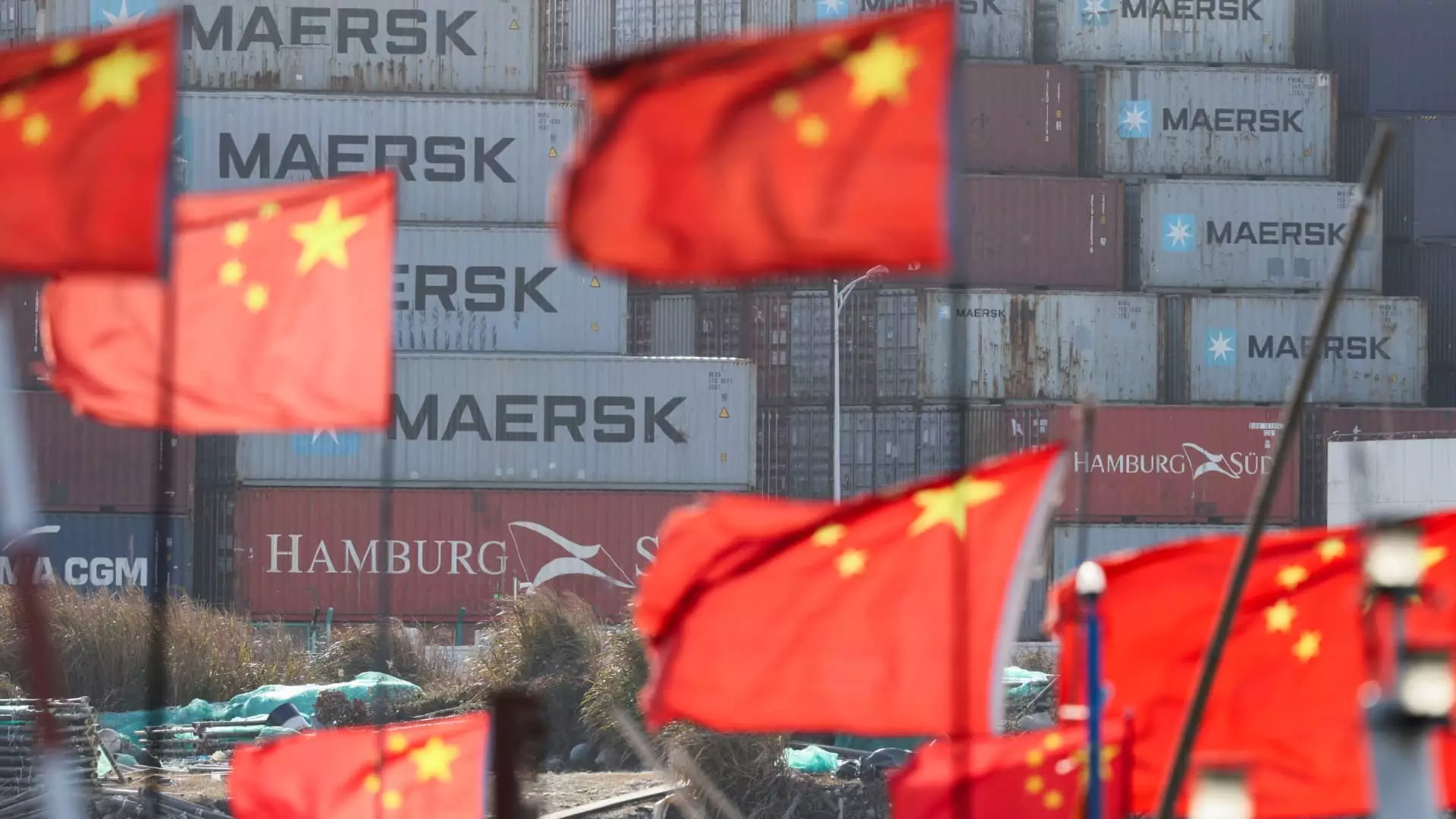The recent announcement from the United States regarding a staggering 34% increase in tariffs on Chinese goods has sent ripples through the global economy. As geopolitical tensions elevate, one might reflexively anticipate an aggressive retaliation from China. However, a deeper examination reveals a more calculated response, underscoring China’s awkward dance between defiance and pragmatism. Analysts suggest that instead of engaging in a tit-for-tat approach, China is likely to focus on domestic economic stimulus and strengthening its ties with a wider array of trading partners.
Domestic Focus Over Retaliatory Measures
In the hours following President Trump’s announcement, the Chinese Ministry of Commerce responded not with bombastic threats but with calls for dialogue and negotiation. This indicates a notable strategy shift—one that is less about responding to provocations with provocation, and more about reinforcing its own economic ecosystem. Economists like Bruce Pang, a notable voice in the sphere of Chinese commerce, assert that China will likely divert its energy towards bolstering domestic consumption, expanding its fiscal initiatives, and diversifying export markets.
Historically, such internal adjustments align with China’s broader goals of minimizing reliance on U.S. consumers, a necessity highlighted by significant tariffs that have already raised the total cost of Chinese goods exported to the U.S. to a staggering 54%. The narrative that emerges is one of resilience, with China preparing its economy for a long-term strategic redirection rather than an impulsive reaction.
Strategic Investments and Domestic Consumption
Recent months have illustrated China’s dedicated pivot toward stimulating its domestic economy. The government is keen on establishing a robust internal market while supporting private enterprises, as demonstrated by President Xi Jinping’s engagement with prominent tech entrepreneurs such as Jack Ma. This recalibration signifies an acknowledgment of the critical role that homegrown innovation and consumption play in sustaining economic health.
Larry Hu, Chief China Economist at Macquarie, emphasizes the urgency of this strategy amid looming predictions of a slowdown due to diminishing export markets. Instead of imposing retaliatory tariffs, it seems the focus now turns to employing blacklists, implementing export controls on vital resources, and navigating complex foreign enterprise regulations—an indirect yet potent means of exerting influence while avoiding head-on confrontation.
In this climate, the Chinese economy is being fortified from within. By enhancing incentives for consumption and backing fiscal support programs, Beijing is signaling to both its economic leaders and citizens that the path forward is one of self-reliance and growth, challenging the conventional assumption that it would react defensively to U.S. pressures.
Global Trade Shifts and New Alliances
Moreover, the reshuffling of global trade dynamics cannot be understated. Countries like Vietnam and Thailand, previously seen as alternatives for U.S. supply chains, are now witnessing a redirection of focus back toward China. By leveraging its vast manufacturing prowess and bolstering trade relationships, China appears to be positioning itself not merely to endure but also to thrive in an environment hostile to its exports.
The Regional Comprehensive Economic Partnership (RCEP), which brings together key economic players in Asia, has further embedded China in a network that offers economic stability and fosters cooperative trade practices. As China’s trade sphere expands, the significance of its partnerships with ASEAN nations becomes increasingly pronounced, especially as these countries lean into closer economic ties partly in response to U.S. policies.
Through this network, China is not just deflecting potential fallout from tariffs but reshaping the very contours of regional trade. By orchestrating deeper connections with its neighbors, it seems to be priming itself for long-term growth irrespective of American tariff constraints.
As the global economic landscape continues to evolve, China’s response to U.S. tariffs illuminates a broader strategy rooted in resilience and adaptability. By focusing on internal consumption and fostering strategic alliances, China is not positioning itself as the victim of U.S. trade policy but rather as an agile player capable of navigating turbulent waters.
This shows a larger philosophical shift about how nations can withstand external pressures—a move that challenges Western narratives of dominance and subservience. The effective realignment of China’s economic policies points to an essential truth: in the face of adversity, enhancing one’s own capabilities and alliances may ultimately be the most formidable response of all. While the outcome of the tariff dispute remains uncertain, one thing is clear: China’s strategic agility is set to redefine its place on the global stage.


Leave a Reply